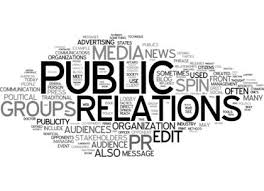In the dynamic landscape of public relations (PR), technology plays a pivotal role in shaping the way professionals engage with their audience, build brand reputation, and manage communication strategies. As we navigate the digital era, it’s crucial to explore the various ways technology is revolutionizing the PR industry. This article delves into 10 key transformations, highlighting the impact of cutting-edge tools and platforms on the practice of public relations.
- Data-Driven Decision Making:
One of the most significant ways technology is changing the PR industry is through the advent of data-driven decision making. Advanced analytics tools allow PR professionals to gather and analyze vast amounts of data, providing valuable insights into audience behavior, sentiment analysis, and campaign effectiveness. This data-driven approach enables PR practitioners to make informed decisions, tailor their strategies, and measure the impact of their efforts more accurately.
- Social Media Influences and Monitoring:
The rise of social media has profoundly influenced the PR landscape. Platforms like Facebook, Twitter, Instagram, and LinkedIn serve as powerful tools for building brand awareness and engaging with the audience. PR professionals leverage social media monitoring tools to track conversations, identify trends, and manage crises in real-time. This instant connectivity allows for more responsive and proactive communication strategies.
- Virtual Reality (VR) and Augmented Reality (AR):
The integration of virtual reality and augmented reality technologies has opened new dimensions in storytelling for PR campaigns. Brands now have the ability to create immersive experiences that captivate their audience, offering a more personalized and interactive approach. Whether it’s virtual product launches or augmented reality press releases, these technologies provide innovative ways to convey messages and enhance brand engagement.
- Artificial Intelligence (AI) in Media Outreach:
Artificial intelligence is streamlining media outreach efforts in the PR industry. AI-driven tools analyze journalists’ preferences, helping PR professionals tailor their pitches for maximum impact. Automated chatbots are also being used for initial media inquiries, freeing up time for PR teams to focus on strategic planning and relationship-building. AI is transforming the efficiency and precision of media relations, ensuring messages reach the right audience at the right time.
- Content Creation and Distribution:
Technology has revolutionized the way content is created, distributed, and consumed in the PR industry. With the advent of tools like content management systems, video editing software, and graphic design applications, PR professionals can produce high-quality and visually appealing content with ease. Additionally, digital platforms and social media channels facilitate seamless content distribution, reaching a global audience instantly.
- Influencer Marketing Platforms:
In the era of social media influencers, technology has given rise to specialized platforms that connect brands with influencers relevant to their target audience. These platforms streamline the collaboration process, from identifying influencers to negotiating partnerships and measuring campaign success. Influencer marketing has become a powerful PR strategy, leveraging the trust and credibility influencers have built with their followers.
- Crisis Management in the Digital Age:
Technology has transformed the way PR professionals handle crises. Social media listening tools, real-time analytics, and crisis simulation software provide valuable insights and help organizations prepare for and respond to crises effectively. The ability to monitor and manage crises in real-time minimizes damage to a brand’s reputation and allows PR teams to proactively address issues before they escalate.
- Personalization and Targeted Communication:
Advancements in data analytics enable PR professionals to personalize communication strategies based on individual preferences and behaviors. Whether through targeted email campaigns, personalized content recommendations, or customized social media interactions, technology allows for a more tailored approach to communication. This personalization enhances audience engagement and fosters stronger connections between brands and their stakeholders.
- Mobile Communication Strategies:
The prevalence of smartphones has shifted the focus of PR strategies towards mobile communication. PR professionals now optimize content and campaigns for mobile platforms, recognizing the importance of reaching audiences on the devices they use most frequently. Mobile apps, push notifications, and mobile-friendly websites play a crucial role in ensuring that PR messages are accessible and engaging for on-the-go audiences.
- Blockchain for Transparency and Authenticity:
Blockchain technology is making waves in the PR industry by enhancing transparency and authenticity. With blockchain, PR professionals can verify the authenticity of information, track the origin of news stories, and ensure the integrity of digital assets. This technology is particularly valuable in combating misinformation and building trust with the audience, reinforcing the credibility of brands and their communications.
Conclusion
The intersection of technology and public relations has ushered in a new era of innovation, reshaping the way professionals navigate the ever-evolving landscape of communication. From data-driven decision making to the integration of virtual reality and artificial intelligence, these ten transformations underscore the profound impact technology has on the PR industry. As technology continues to advance, PR professionals must adapt and embrace these changes to stay ahead in an increasingly digital and interconnected world.

